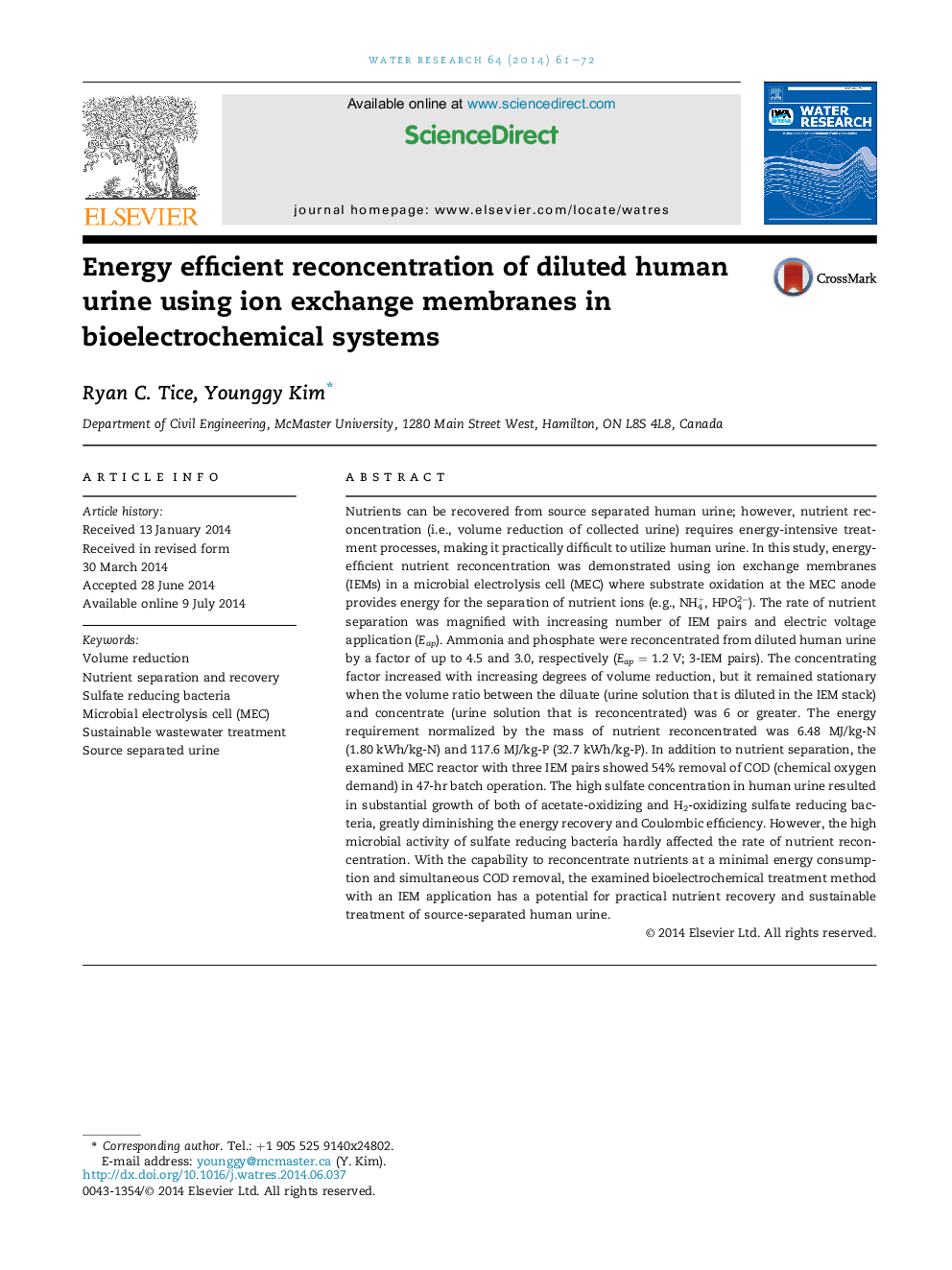| کد مقاله | کد نشریه | سال انتشار | مقاله انگلیسی | نسخه تمام متن |
|---|---|---|---|---|
| 4481430 | 1623104 | 2014 | 12 صفحه PDF | دانلود رایگان |
• Bioelectrochemical systems with ion exchange membranes separated nutrient ions.
• Energy required for nutrient reconcentration was 6.48 MJ/kg-N and 117.6 MJ/kg-P.
• Ammonia and phosphate were concentrated by a factor of 4.5 and 3.0, respectively.
• Competitive transport among common ions in urine affected nutrient separation.
• Highly active sulfate reducers did not affect the rate of nutrient separation.
Nutrients can be recovered from source separated human urine; however, nutrient reconcentration (i.e., volume reduction of collected urine) requires energy-intensive treatment processes, making it practically difficult to utilize human urine. In this study, energy-efficient nutrient reconcentration was demonstrated using ion exchange membranes (IEMs) in a microbial electrolysis cell (MEC) where substrate oxidation at the MEC anode provides energy for the separation of nutrient ions (e.g., NH4+, HPO42−). The rate of nutrient separation was magnified with increasing number of IEM pairs and electric voltage application (Eap). Ammonia and phosphate were reconcentrated from diluted human urine by a factor of up to 4.5 and 3.0, respectively (Eap = 1.2 V; 3-IEM pairs). The concentrating factor increased with increasing degrees of volume reduction, but it remained stationary when the volume ratio between the diluate (urine solution that is diluted in the IEM stack) and concentrate (urine solution that is reconcentrated) was 6 or greater. The energy requirement normalized by the mass of nutrient reconcentrated was 6.48 MJ/kg-N (1.80 kWh/kg-N) and 117.6 MJ/kg-P (32.7 kWh/kg-P). In addition to nutrient separation, the examined MEC reactor with three IEM pairs showed 54% removal of COD (chemical oxygen demand) in 47-hr batch operation. The high sulfate concentration in human urine resulted in substantial growth of both of acetate-oxidizing and H2-oxidizing sulfate reducing bacteria, greatly diminishing the energy recovery and Coulombic efficiency. However, the high microbial activity of sulfate reducing bacteria hardly affected the rate of nutrient reconcentration. With the capability to reconcentrate nutrients at a minimal energy consumption and simultaneous COD removal, the examined bioelectrochemical treatment method with an IEM application has a potential for practical nutrient recovery and sustainable treatment of source-separated human urine.
Figure optionsDownload high-quality image (230 K)Download as PowerPoint slide
Journal: Water Research - Volume 64, 1 November 2014, Pages 61–72
